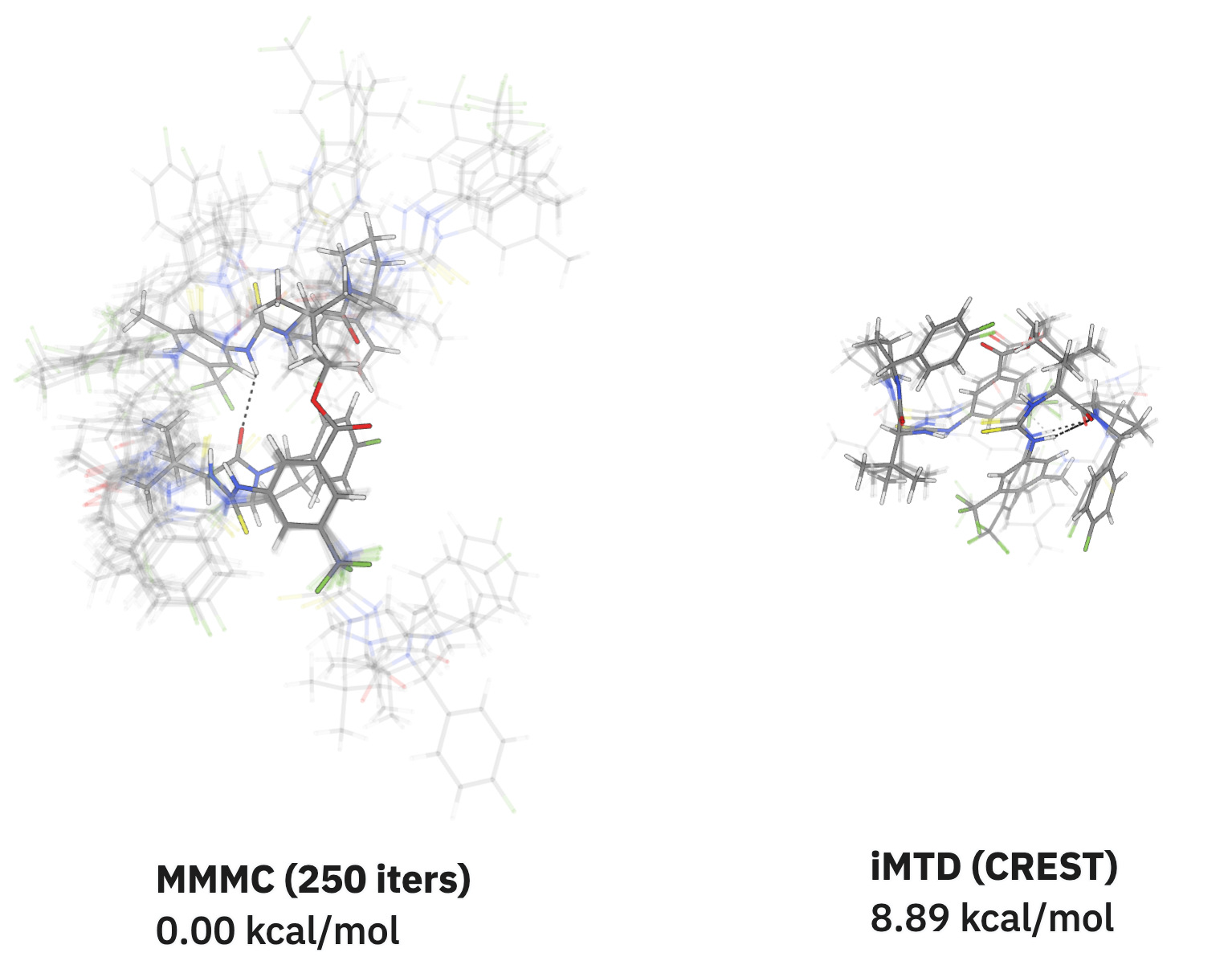Rowan Research Spotlight: Emilia Taylor
by Corin Wagen · Nov 19, 2025
Antimicrobial resistance is a growing global health crisis that threatens both antibiotic effectiveness and broader medical progress. With few antibiotics in development and limited commercial incentives for new antibiotic discovery, innovative approaches are urgently needed. Rather than focusing on developing antibiotics with traditional mechanisms of action, Emilia Taylor aims to develop bifunctional proteolysis-targeting chimeras (PROTACs) that can not only restore the efficacy of existing antibiotics but also act as novel antimicrobials agents. Emilia's work builds on decades of research into mammalian PROTACs; now, she's working to adapt this concept to bacterial systems, with the goal of building molecules that can degrade essential and resistance-causing bacterial proteins.

Emilia Taylor
(For the unfamiliar, PROTACs are bifunctional molecules that use the cell's own protein-degradation mechanisms to remove specific proteins. PROTACs typically have three components: a ligand that binds a target protein of interest, a ligand that binds an E3 ligase, and a linker that connects the two. The PROTAC molecule then engages both proteins, inducing proximity, which leads to the polyubiquitination of the target protein and degradation by the proteasome machinery.)
Emilia is a fourth-year PhD student at the University of Oxford who has spent the last several years at the interface of medicinal chemistry, microbiology, and chemical biology. She started in medicinal chemistry at the University of Leeds, moved to Imperial College London for a master's degree where she first fell in love with bacteria and chemical biology, and then joined AstraZeneca in Sweden. At AstraZeneca, she was pulled into the emerging field of PROTACs, working on bifunctional degraders for cardiovascular disease and heart failure. Somewhere along the way, a simple question started to nag at her: if PROTACs work so well in mammalian systems, why couldn't a similar logic be applied to bacteria?
Bringing PROTACs to Bacteria
During her time at AstraZeneca, Emilia stayed in touch with her master's supervisor at Imperial. Together they started sketching out the idea of bacterial PROTACs, or "BacPROTACs" for short: bifunctional molecules that hijack endogenous bacterial proteases to selectively degrade proteins. (The first BacPROTAC work was published by a different group shortly thereafter.) Her thesis now focuses on turning this idea into a practical antibacterial platform.
Instead of trying to design yet another inhibitor of an essential enzyme by building on existing classes of antibiotics, Emilia is building bifunctional molecules that recruit bacterial proteases to destroy either essential proteins or, just as importantly, the proteins that confer resistance. If you can degrade a protein that causes drug resistance, like an efflux pump, you can in principle resensitize a pathogen to existing antibiotics and extend the life of older antibiotics. Given how reluctant industry has become to invest in brand-new antibacterials, this kind of resistance-modulating approach could matter a lot.
The challenges are obvious. Bacterial cells are notoriously hard to get into, while bifunctional degraders are bulky and often poorly permeable. Bacteria also have different proteolytic systems found within different subcellular compartment.
Getting BacPROTACs Into Bacteria
Emilia is working on solving these problems from several different angles. One strategy is to lean on siderophores, bacterial iron-uptake motifs that can be built into the degrader to hijack existing transport pathways and drag the molecule across the cell envelope. Siderophore-based delivery strategies that hijack bacterial iron-uptake machinery have already shown promise for a variety of different payloads; Emilia hopes that this mechanism can also allow BacPROTACs to get into bacterial cells.
A second line of work focuses on shrinking the recruiter peptide itself. In collaboration with AstraZeneca colleagues, her team spiked a protease into E. coli lysates and used proteomics to look for sequence motifs enriched in degraded proteins. That analysis pointed them to a pair of amino acids that seem to be especially good at triggering degradation. Building those residues into the protease-recruiting motif lets them cut the peptide length down substantially, which should help both permeability and synthetic tractability.
This is where computation comes in. Emilia has been using Rowan to search for shorter peptide binders that still make strong contacts with the bacterial protease. Using Rowan's batch-docking workflow, she docked and scored panels of candidate peptides, looking for designs that incorporate the enriched residues from the proteomics experiment while shaving off as many other atoms as possible. "I've run this now," she told me, "and I've managed to see that the data that was generated matched our proteomic experiment." This is a reassuring signal that the computational model can be trusted to produce prospectively valid data.
A third branch of the project also aims to design better binders, but using experimental techniques. In January, Emilia will head to Stanford for a phage-display campaign, with the goal of identifying cyclic peptides with better binding affinity to bacterial proteases. While identifying binders might seem like a roundabout way to improve cell permeability, Emilia says that PROTAC design becomes much easier "the closer you can get to a classic small molecule." Higher-affinity binders may translate to "improved ligand efficiency," which lets scientists "thread the solubility—permeability needle" and get into the cell more easily. "It's a more favorable design space," she explains.
Building the BacPROTAC Toolbox
Emilia's vision for the field is shaped by her time in the mammalian PROTAC world. In pharma, PROTAC discovery now benefits from panels of known E3 ligase recruiters, libraries of linkers, and relatively modular ways of building and screening these molecules. In bacteria, nothing like that exists yet.
Part of her PhD is essentially laying the groundwork for such a toolbox. Different bacterial compartments house different proteases, so you cannot use the same recruiter everywhere. She imagines a future where a researcher can identify a troublesome bacterial protein, look up where it lives in the cell, and then pull from a "toolbox of protein recruiters with different linkers attached" (in her words) to build candidate BacPROTACs in a combinatorial fashion.
Solid-phase synthesis helps bring that vision to life by making it trivial to swap linkers in and out. Once the protein-binding and protease-recruiting ends are optimized, linkerology can become its own systematic playground rather than an afterthought. For now, much of the published work in bacterial degraders uses standard PEG-like linkers. Emilia expects that to change as the field matures and people start to deliberately engineer chameleonicity, intramolecular folding, and other linker-driven effects into these molecules.
Direct-to-Biology Chemistry
Emilia puts a lot of emphasis on high-throughput synthesis. At AstraZeneca, she helped set up a direct-to-biology screening platform for PROTACs. The idea is simple but powerful. Start with a library of E3 ligase recruiters, each functionalised with an amine and a variety of linkers. Take a panel of protein-binding ligands bearing carboxylic acids. Perform nanomole-scale amide couplings between all combinations in 384-well plates, pull tiny aliquots for LC–MS to verify that the reactions worked well enough, evaporate the solvent, and then go straight into cell-based degradation assays without purification.
"The incredible thing," she recalls, "was that we got maybe 50% conversion during a reaction, and it matched the same potency of PROTACs that were supposedly 100%." For early hit-finding, crude is good enough. The direct-to-biology approach does not replace purification, but it does buy one or two orders of magnitude higher throughput, saving precious starting material.
So far, these workflows have mostly been applied in mammalian systems, but there is nothing fundamentally stopping them from being adapted to BacPROTACs. Emilia has not yet seen a true direct-to-biology platform in bacteria, but she is convinced it is possible. Pair a modular synthetic scheme with high-content readouts of bacterial protein degradation, and you suddenly have a way to explore degrader chemical space that would be impossible one molecule at a time.
Computation in the Beyond-Rule-of-Five Regime
Despite her successes in using computational chemistry in her research, Emilia thinks that more work is needed developing computational methods for PROTACs. Coming from a big-pharma background, she has seen the tools that work well for classic small molecules: docking, free-energy calculations, and robust property-prediction pipelines. In the beyond-rule-of-five space of peptides, macrocycles, and PROTACs, things feel much less settled.
In particular, she would like to see better modeling of ternary complexes. It is not enough that each end of the degrader binds its partner protein. The real magic of PROTACs is cooperative ternary complex formation: the induced interface that the bifunctional compound creates between the target and the protease. Getting that right with current docking and scoring tools is difficult, full molecular-dynamics treatments of large ternary assemblies are still expensive and finicky, and machine-learning approaches struggle because of the lack of data. But she is optimistic that the tools will improve. "In an ideal scenario," she says, "there would be an MD simulation of every ternary complex" that allowed scientists to see how the proteins and degrader are interacting.
For now, she uses computation in a more pragmatic way. Modeling helps her identify solvent-exposed exit vectors for attaching linkers to known ligands, and docking and scoring through Rowan helps her prioritize protease-binding motifs that are both shorter and more potent. As better methods for ternary complex modeling and permeability prediction become usable, she expects them to slot naturally into this design loop.
In the meantime, there is plenty to do in the here and now. Turning bacterial PROTACs from clever sketches into workable drugs will require better chemistry, better biology, and better computation all at once. Emilia's work sits right at that intersection: mining proteomics to design smarter recruiters, using platforms like Rowan to triage candidates and validate motifs, and building the experimental systems needed to see whether these big, weird molecules can actually march into bacterial cells and dismantle the machinery of resistance.








